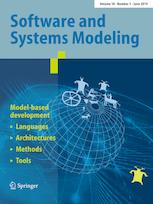Andrea Burattin
Associate Professor
Technical University of Denmark
Exploring how users engage with hybrid process artifacts based on declarative process models: a behavioral analysis based on eye-tracking and think-aloud
A.A. Andaloussi, F. Zerbato, A. Burattin, T. Slaats, T.T. Hildebrandt, B. Weber
Abstract

Process design artifacts have been increasingly used to guide the modeling of business processes. To support users in designing and understanding process models, different process artifacts have been combined in several ways leading to the emergence of the so-called “hybrid process artifacts”. While many hybrid artifacts have been proposed in the literature, little is known about how they can actually support users in practice. To address this gap, this work investigates the way users engage with hybrid process artifacts during comprehension tasks. In particular, we focus on a hybrid representation of DCR Graphs (DCR-HR) combining a process model, textual annotations and an interactive simulation. Following a qualitative approach, we conduct a multi-granular analysis exploiting process mining, eye-tracking techniques, and verbal data analysis to scrutinize the reading patterns and the strategies adopted by users when being confronted with DCR-HR. The findings of the coarse-grained analysis provide important insights about the behavior of domain experts and IT specialists and show how user’s background and task type change the use of hybrid process artifacts. As for the fine-grained analysis, user’s behavior was classified into goal-directed and exploratory and different strategies of using the interactive simulation were identified. In addition, a progressive switch from an exploratory behavior to a goal-directed behavior was observed. These insights pave the way for an improved development of hybrid process artifacts and delineate several directions for future work.
Paper Information and Files
In Software & Systems Modeling, vol. 20 (2021).
- DOI: 10.1007/s10270-020-00811-8
- Download text This is a post-peer-review, pre-copyedit version of an article published in Springer Software & Systems Modeling. The final authenticated version is available online at: http://dx.doi.org/10.1007/s10270-020-00811-8.
General rights
Copyright and moral rights for the publications made accessible in the public website are retained by the authors and/or other copyright owners and it is a condition of accessing publications that users recognise and abide by the legal requirements associated with these rights.
- Users may download and print one copy of any publication from the website for the purpose of private study or research.
- You may not further distribute the material or use it for any profit-making activity or commercial gain.
If you believe that this document breaches copyright please contact us providing details, and we will remove access to the work immediately and investigate your claim.